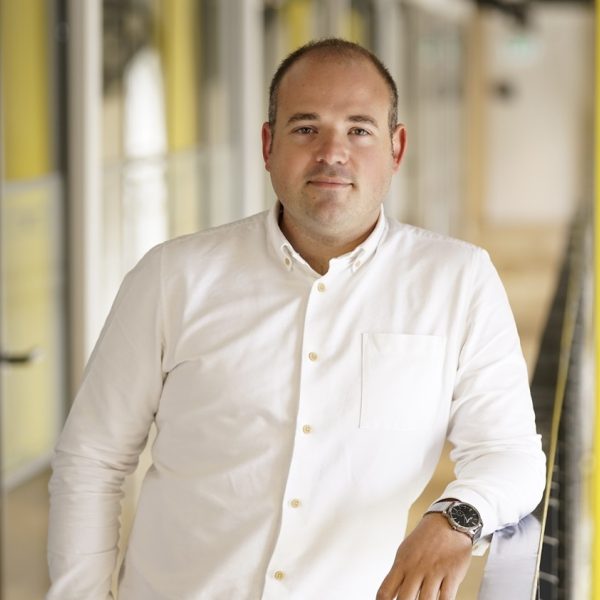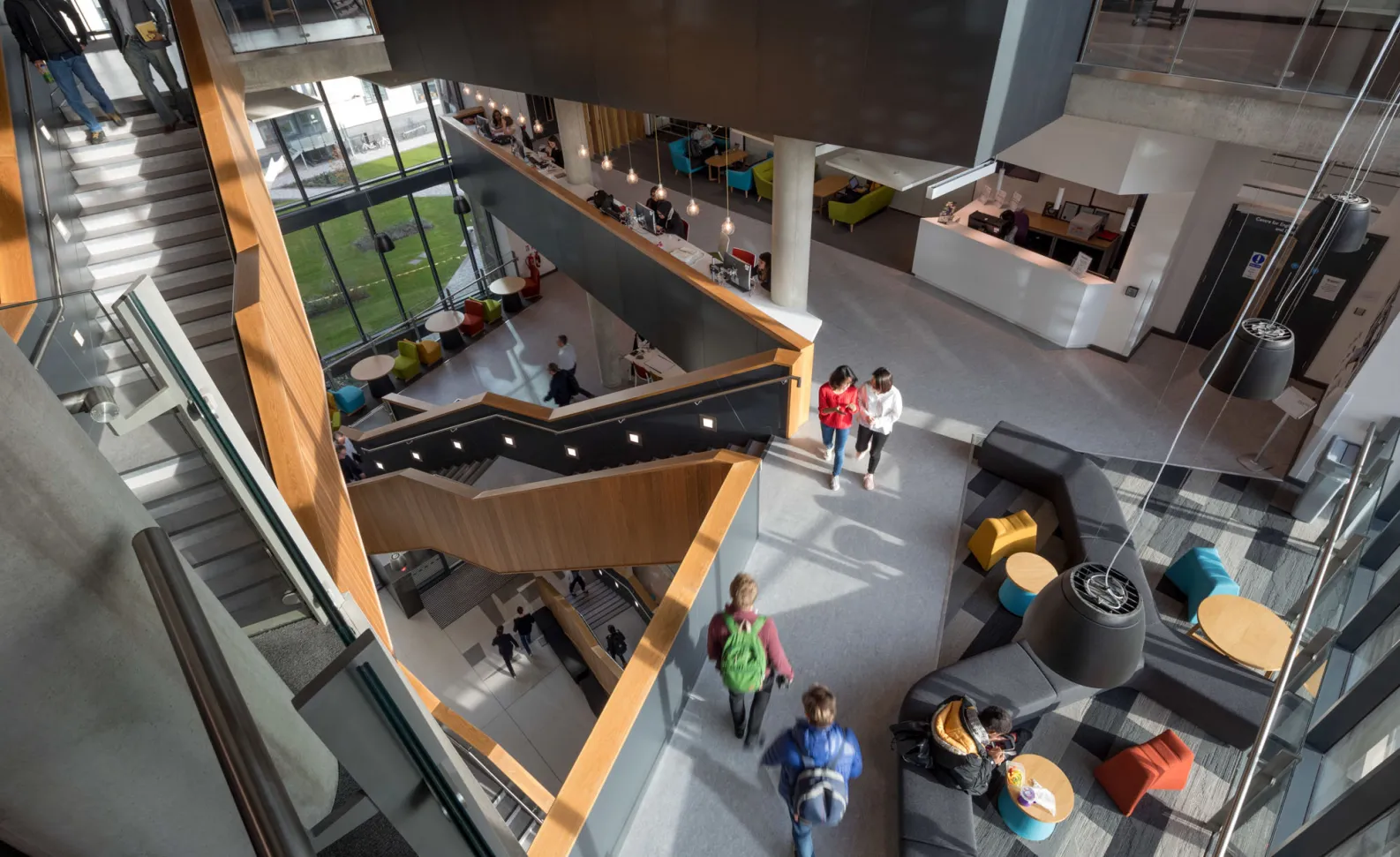Insight
Learned beliefs: Placing education at the forefront of urban regeneration
3 Sep 2025

Kieran Dyer
Director
While education is often seen as a driver of social mobility and economic growth, the sector faces an £800m funding shortfall in 2025. Here, our architectural director Kieran Dyer explores how well-integrated education facilities can support both individual opportunity and community regeneration.
By its nature, education is in a constant state of flux. Evolving societal needs, technological advancements, and ongoing research into better pedagogies continue to shape and shift our built environment.
As a society, we’re accustomed to the crucial role it plays in our lives. While methods and environments evolve, education’s fundamental role in shaping our life paths remains constant.
We are all entitled to free and compulsory education throughout early school years, with themes of equal access and opportunity reinforced through societal norms. As we advance into post-16 education, it is traditionally understood that choosing vocational apprenticeships or to study for a university degree can position us for better employment outcomes and quality of life.
This notion is reinforced by statistical research, with the economic output of higher education estimated to be at least £116bn, according to a House of Lords report in 2024.
Education remains the heartbeat of society, which is why town planners are consistently placing the sector at the forefront of regeneration projects across the country. Whether through creating new jobs, driving footfall in town centre areas, or sparking industry innovation, educational institutions are central to our economic growth. The close integration of communities – of people being physically present and interacting with one another – underpins these efforts while also recognising its importance in driving social mobility.
That’s why, when wandering through any of today’s towns and cities, we see education in motion – not just for students in schools, colleges, and universities, but for people at every stage of life.
Schools as community anchors
Schools are evolving into something much more than just education institutions. Increasingly they function as multi-purpose and community-led hubs, designed for out-of-hours activities from hobby groups to gym-goers and local sports teams and more. No longer just spaces for education, these buildings are becoming neighbourhood assets, accessible seven days a week.
As designers, we fulfil a critical role in shaping these spaces to support broader social objectives that suit a wider and more diverse range of stakeholders. By working with regional authorities, we help create facilities that promote interaction, inclusivity, and shared ownership. This design-led approach not only maximises the utility of school buildings but also fosters stronger community interaction between people from all walks of life.
There are benefits for school owners too. While having longer access hours may indicate extra staffing or security considerations, the consistent usage of these spaces can deliver vital extra income for schools, which can be used to maintain facilities that may be ageing or reinvested in several other areas including staffing or technological improvements.
While controversial, the government is also considering a revival of the Private Finance Initiative (PFI) contract, which may help to ensure there is a continued funding pipeline for school facilities to be maintained as community-led hubs.
Colleges and vocational revival
In the realm of post-16 education, colleges are playing a renewed role in vocational training and workforce development.
By aligning more closely with the needs of local industries, some colleges are helping to bridge the gap between education and employment, often focusing on apprenticeship models that promote hands-on training and practical learning for students, particularly for individuals that may not wish to move into university education.
A standout example is the Nottingham College City Hub, part of the wider £2bn 'Green Heart' regeneration project. Here, a state-of-the-art new college campus is integrated with wider leisure, infrastructure, and housing improvements, embodying a new vision of what a college can be.
This 15-minute city approach – where work, education, healthcare, and wellbeing services are all within easy reach – promotes local self-sufficiency and boosts mobility for all, particularly for those from lower income backgrounds.
Universities as catalysts for growth
Universities are not just institutions of higher learning – they’re catalysts for urban renewal, talent development, and long-term investment.
Today, it is not unusual to see major corporations such as Rolls-Royce work closely with universities to upskill and train the next generation of workers, embedding education within the future of industry.
More specifically, the University of Birmingham holds partnerships with companies like Accenture, BP, and Deloitte, while somewhat controversially, Facebook’s owners Meta delivers multi-million-pound funding to our elite universities.
Where public sector funding is often stretched, the private sector can bridge the gap for education to help deliver vital training, research, and innovation that ripple far beyond campus walls.
From an urban regeneration perspective, the University of Bristol's involvement in the Temple Meads redevelopment is a clear illustration of how education is reshaping our city centres.
When looking at larger-scale city-led developments, planners will work with designers to ‘zone’ areas of urban masterplans to increase social mobility and ensure a close integration between work, education, leisure and housing.
For example, as well as providing an accessible transport route through to Temple Meads train station, Bristol’s entire new site characterises the 15-minute city approach, with a new public square, 22,000 new jobs and 10,000 new homes for the area.
Here, university spaces are designed to be accessible to the public, reinforcing their status as community owned, led and managed, promoting upward social mobility and connection.
Space considerations
As the UK government looks to start construction on its 100 new towns plan by 2029, space, particularly with a growing population, becomes a primary planning concern. Education brings inner city regeneration, as evidenced with the Temple Meads project, but it is also worth considering how the sector can support more rural-led planning, with the UK government currently analysing a variety of locations for its new towns across the country.
Looking to lessons from abroad, Seoul’s approach to education can be seen as particularly noteworthy in this case.
In 2024, Seoul’s local authorities announced £370m for its universities over five years in a bid to boost struggling rural institutions. As part of its plans, some university facilities are set to be open to public use, with dormitories available for tourists to stay in during academic holidays. This closer look at rural-led areas and education perhaps mirrors issues in the UK, where education can be the spark that not only ignites inner-city investment, but also rural-led areas too.
Investing in place
Regeneration follows confidence - and education is one of the most powerful investments we can make.
By placing education at the centre of our planning and design strategies, we promote interaction, learning, mobility, and economic resilience. Schools, colleges, and universities are not peripheral services, they are the engines of place-making.
Though funding challenges persist, we must not lose sight of the enormous regeneration potential already being realised across the UK. If we want to build better, fairer, and more connected communities, then education must remain front and centre in our thinking — and our cities.
Education
We are privileged to work on hundreds of education projects that are improving the lives of children and young adults from pre-school, right through to higher education.
